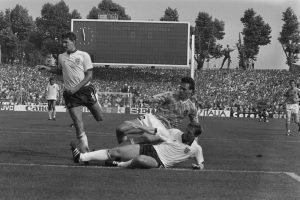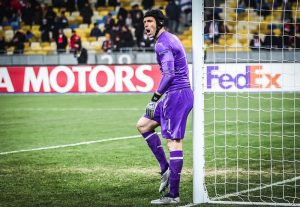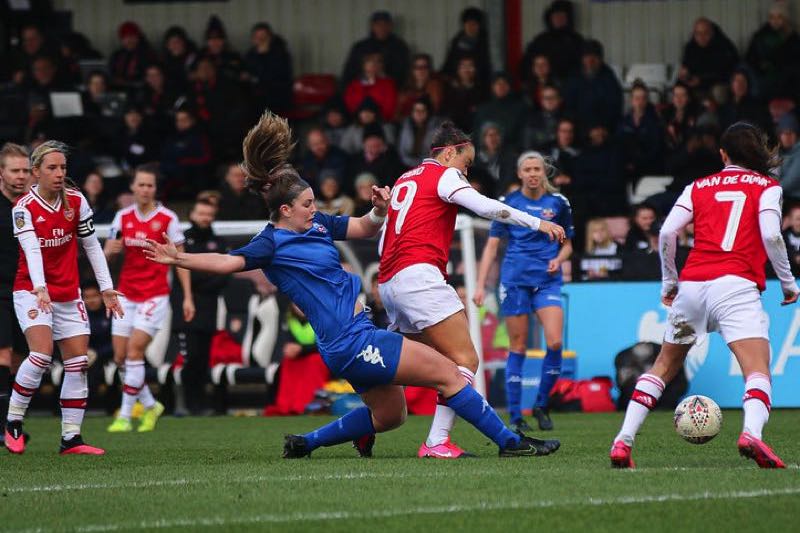
Arsenal Women (James Boyes | Flickr.com)
Arsenal Women Football Club, who share the nickname ‘Gunners’ with the men’s team, have long been a powerhouse in the world of women’s football. With a rich history of success, a star-studded squad and a passionate fan base, the team are among the most well-known in the women’s game. In this article, we’ll provide a comprehensive overview of the Arsenal WFC, highlighting some of their many accolades, their key players, the home venue and a general (if brief) history.
Origins of the Arsenal Women
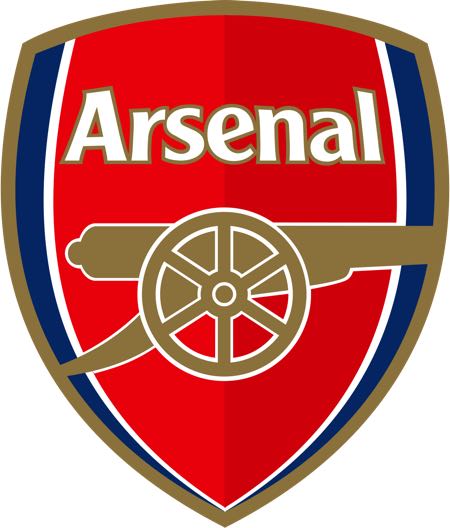
The creation of Arsenal Women back in 1987 owes a lot of thanks to then-men’s team kit manager, Vic Akers. He saw the value of branching out and was even appointed the first manager of the women’s team. Back then, and for much of their history, the side was known as Arsenal Ladies Football Club. It is only since 2017 that the club formally changed to its current name of Arsenal Women, although commonly referred to as just Arsenal. The women’s game may be enjoying some healthy popularity now but, during the early days of the new squad, there was little interest. Due to this, Arsenal only played in cup competitions for the first four years of their existence.
By 1991 though, Arsenal managed to get themselves into the Southern Premier Division and not only did they lift the title but they also won the League Cup. Early success continued to come the club’s way as they lifted the Premier Division title a year later and secured a consecutive hattrick of League Cups. They also bagged themselves the FA Cup in 1993, giving them the first taste of a domestic treble.
By 2002, the club gained semi-professional status, which was a notable milestone. At the time, only one women’s club (Fulham) had full professional status. The club’s owners clearly had serious plans for the women’s team and were eager to continue their incredibly impressive early success. The following year the Gunners began a six-year league unbeaten run, spanning 108 games in total. With this, unsurprisingly, resulting in six league titles as well as eight domestic trophies, Arsenal had firmly established themselves as the biggest women’s club in England.
Stadiums: Meadow Park or Emirates Stadium
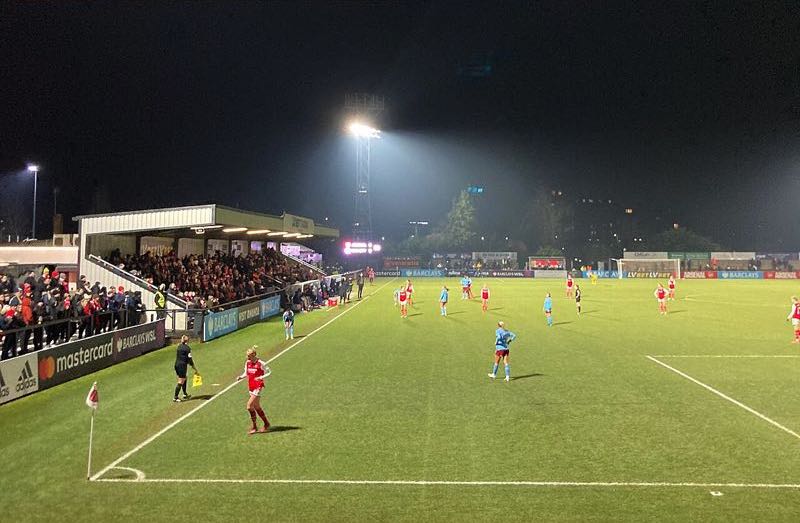
Most of the time you will find the Gunners playing at Meadow Park, which is also the home of National League outfit Boreham Wood FC. The Hertfordshire ground, situated around 12 miles north-west of the Emirates Stadium, fits 4,500 spectators with 1,700 of these being seated. If not at Meadow Park you will find Arsenal Women playing at the home of the men’s team, the Emirates Stadium. Prior to the 2023/24 season, it was announced the club would play five of their WSL games there as well as all Champions League matches after the group stage.
Football Kit & Sponsors
 Arsenal’s men’s and women’s teams have always had the same kit manufacturer and sponsor. The current deal sees the Gunners wear an Adidas strip with a Fly Emirates main sponsor and Visit Rwanda on the sleeve. Red and white feature on the home shirt, with these being the traditional Arsenal colours. The away strip has historically been the same across both teams too, however, the women’s team enjoyed a bespoke kit for the 2023/24 season. When debuted on 6th October against Manchester United, this marked the first time the women had worn a separate kit to the men.
Arsenal’s men’s and women’s teams have always had the same kit manufacturer and sponsor. The current deal sees the Gunners wear an Adidas strip with a Fly Emirates main sponsor and Visit Rwanda on the sleeve. Red and white feature on the home shirt, with these being the traditional Arsenal colours. The away strip has historically been the same across both teams too, however, the women’s team enjoyed a bespoke kit for the 2023/24 season. When debuted on 6th October against Manchester United, this marked the first time the women had worn a separate kit to the men.
Key Players
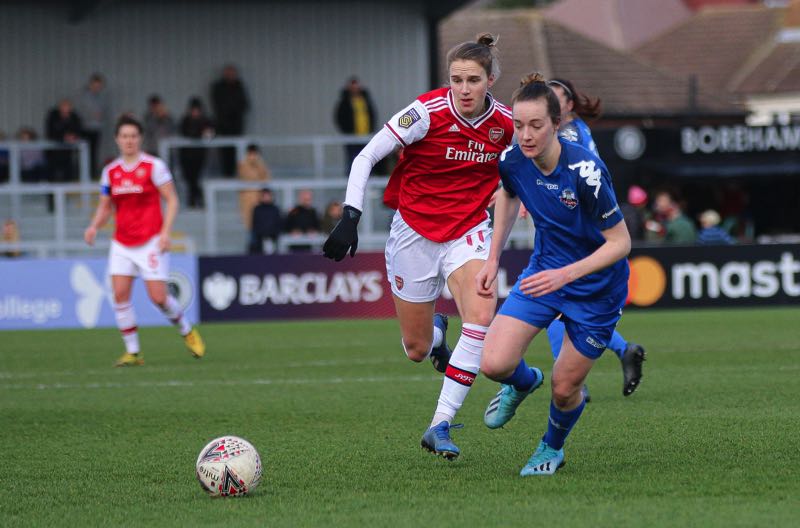
You do not perform as well as Arsenal do without a talented and well-balanced squad but even great teams have their standout names.
Vivianne Miedema
Often regarded as one of the world’s best female footballers, Miedema is a prolific striker known for her exceptional goal-scoring ability and clinical finishing. At the time of writing, she had scored an incredible 121 goals in 148 games for the Gunners.
Kim Little
Although little in name and – relatively so – in physical stature, the Arsenal skipper’s presence on the pitch is gigantic. The Scottish attacking midfielder has collected awards such as PFA Women’s Player of the Year and BBC Women’s Football of the Year during a truly outstanding career.
Frida Maanum
One of the more recent additions to the Arsenal side but a player who has found her feet after a quiet debut season. The Norwegian bagged a very impressive 16 goals during the 2022/23 campaign. Technically gifted and with a superb long-shot in her locker, expectations are high for her.
Katie McCabe
Having a player as versatile as McCabe is a huge asset for any squad. Happy to play anywhere down the left-hand side, the face of Irish football continues to operate at such a high level for Arsenal. In 2023, she scooped the club’s Player of the Season award and Goal of the Season for her winning effort against Man City.
Leah Williamson
Finally, we finish with the rock at the heart of the Gunners defence and club vice-captain. So adept she is on the ball that she is even comfortable playing in midfield but you will usually see her at centre-back. Williamson has been at the club since 2014 and has proven such a strong asset that she was also named captain of the England team in 2022.
Fan Base
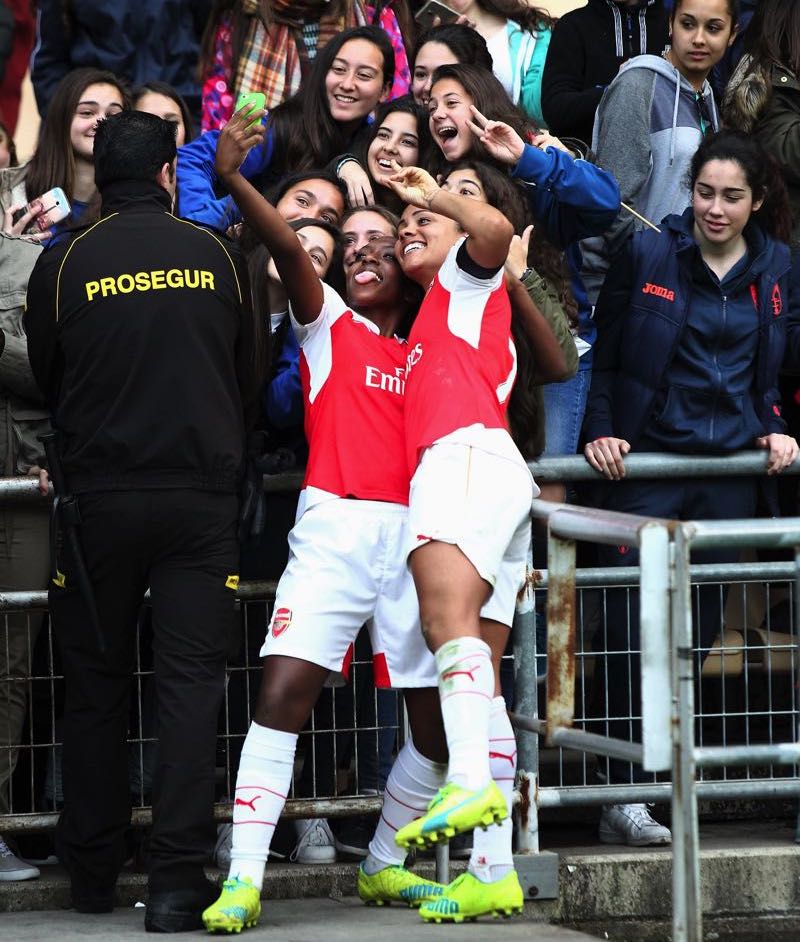
Arsenal Women enjoy a great level of support, with their average home attendance for the 2022/23 Super League campaign standing at 15,046, which was the highest in the division. They also hold the record for the single-game league attendance record, this being when 47,367 fans saw them breeze past local rivals Tottenham 4-0. The atmosphere was particularly electric that day and it seems only a matter of time before this record, set in September 2022, is broken again. Naturally, the success of Arsenal helps draw big crowds but relatively cheap ticket prices do too. An adult can buy a season ticket for as little as £90 (2023/24 season) whereas it is just shy of £1,000 for the men’s team.
Achievements
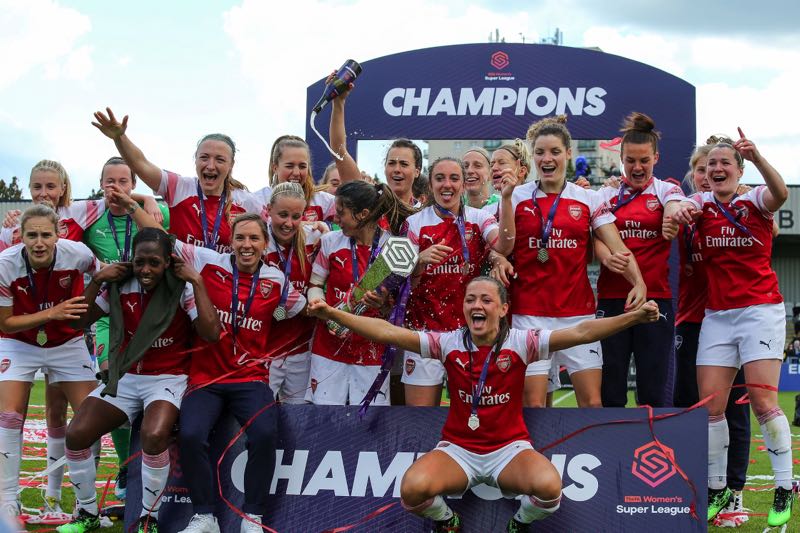
We covered some of the early success that Arsenal enjoyed and although they continue to be one of the best teams in England, trophies have not come as thick and fast in recent seasons. The Gunners face far more competition than they once did and this saw them win just one league title between 2013 and 2023. Despite this, they are still comfortably the most successful club in England, as you would probably guess when seeing the numbers in the table below (figures accurate up to the end of the 2022/23 season).
| Competition | Times Won |
|---|---|
| Women’s Super League | 15 |
| Women’s League Cup (inc. Premier League Cup) | 16 |
| Women’s FA Cup | 14 |
| Women’s Champions League | 1 |
It is well worth highlighting the Champions League win here as Arsenal are the only English team to have won the competition since its inception in 2001. Local rivals Chelsea reached the final in 2021 but this is as close as any other English team has gotten to Europe’s top prize. It was a hard-fought win too for Arsenal who scored the only goal in a two-legged final against Swedish outfit Umea. Alex Scott, who many may recognise from her punditry work, scored the final’s only goal and cemented herself in the Arsenal history books.



